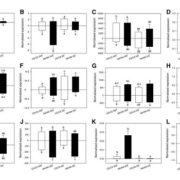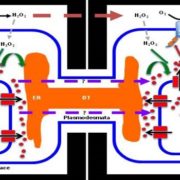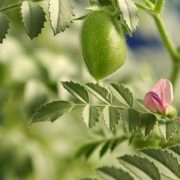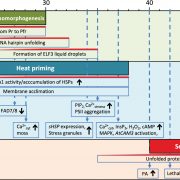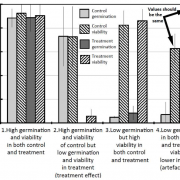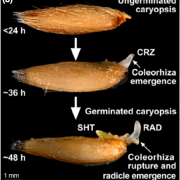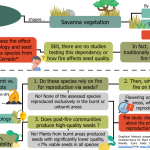Seed germination of mudflat species responds differently to prior exposure to hypoxic (flooded) environments (Seed Sci. Res.) ($)
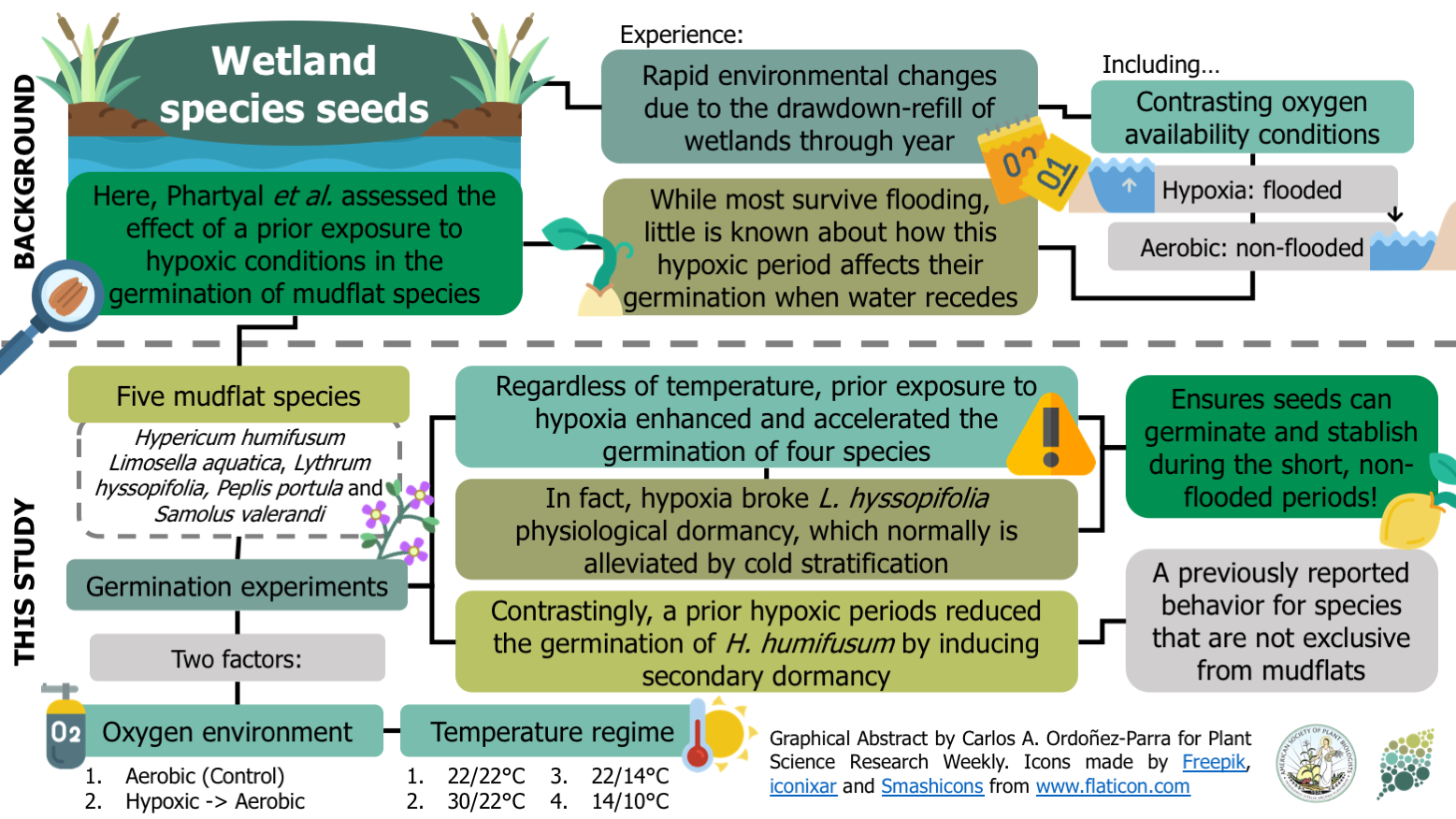
Mudflats species experience rapid changes in their environment due to wetlands’ drawdown and refill throughout the year. For instance, species that inhabit these sites deal with contrasting oxygen environments: hypoxic when the water level is high, and aerobic when it recedes. Most studies have aimed to examine the effect of hypoxia on seed viability. Still, little is known about how these conditions could affect seed germination when oxygen becomes available again. Here, Phartyal and colleagues assess the effect of prior exposure to hypoxic conditions on the germination of five mudflat species from Central Europe. The germination of four of the assessed species increased when seeds experienced hypoxia. For instance, hypoxic conditions seemed enough to alleviate the physiological dormancy of Lythrum hyssopifolia, which generally requires cold stratification to germinate. Given this, hypoxia’s stimulation of germination could be seen as a strategy to maximize growth when the water recedes, usually for a very short time. In contrast, the germination of Hypericum humifusum, which inhabits environments that rarely experience flooding, was reduced when exposed to hypoxia, implying that flooding induces secondary dormancy in this species. Consequently, this study provides insights into the importance of germination responses in the assembly of wetland plant communities. (Summary by Carlos A. Ordóñez-Parra @caordonezparra) Seed Sci. Res. 10.1017/S0960258520000240


